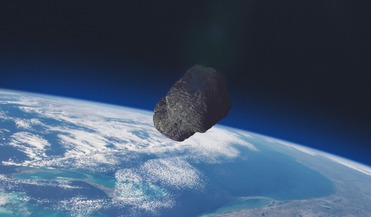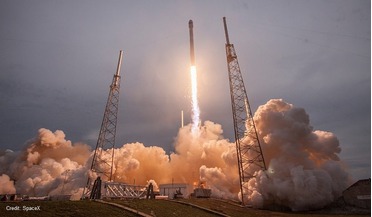 18 September 2019
Researchers calculate feasibility of sending a probe to C/2019 Q4 (Borisov)
18 September 2019
Researchers calculate feasibility of sending a probe to C/2019 Q4 (Borisov)
... the comet in time. An Oberth manoeuvre is a spaceflight manoeuvre, specifically an engine burn performed during the flyby of a celestial body. It uses the gravitational well of the Sun to give the spacecraft a boost; the closer the boost is applied...
 09 June 2021
Meteorites impacting Earth mainly come from a very small region of space, new study says
09 June 2021
Meteorites impacting Earth mainly come from a very small region of space, new study says
... overturns generally accepted meteorite flux theories, it also provides a new perspective on where in the solar system celestial bodies that are at greatest risk of colliding with Earth originate from. “We argue that meteorites and small asteroids...
 October 2015
The Global Space Governance Study – A new regulatory framework for New Space?
October 2015
The Global Space Governance Study – A new regulatory framework for New Space?
... stations, robotic freighters, and even the deployment of private space stations and space colonies in orbit or on celestial bodies. Many of these activities involve totally new types of commercial space ventures including the actual development and...
 March 2016
Space debris conundrum for international law makers
March 2016
Space debris conundrum for international law makers
... Governing the Activities of States in the Exploration and Use of Outer Space, including the Moon and Other Celestial Bodies (Outer Space Treaty), adopted on 19 December 1966 and entered into force on 10 October 1967, Resolution 2222(XXI...
 November 2017
Preserving Apollo’s lunar legacy
November 2017
Preserving Apollo’s lunar legacy
... landing site. Article II of the Treaty states that “outer space, including the Moon and other celestial bodies, is not subject to national appropriation by claim of sovereignty, by means of use or occupation or by any other means.” It is a principal...
 June 2018
Archaeologist of the future
June 2018
Archaeologist of the future
... business. Kepler wrote, in an open letter to Galileo: “We shall prepare, for the brave sky-travellers, maps of the celestial bodies – I shall do it for the moon, you Galileo, for Jupiter.” In his series of planet paintings, Paul Van Hoeydonck...